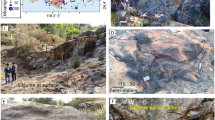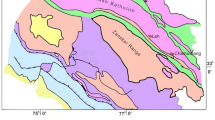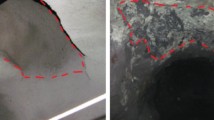Abstract
I HAVE elsewhere1 expressed agreement with Mr. Moore's view that the lack of shaking-down effects provides an important clue to the origin of lunar craters, and at the same time expressed my own view that the structure of the crater Porter is inexplicable in terms of explosive evisceration, a process which I have never favoured, though simple dish-craters in maria could be produced by a bubble-burst through a thin plastic veneer. The fact that craters appear to have been the product of slow and gentle processes does not, in my view, invalidate my hypothesis. Certainly the large craters stem from subsidence, and, as on Earth, the initiating upwards push may not necessarily have been explosive in every case. The blisters seen in some craters probably reflect gentle pressures without break-out. It remains possible that many of the large cirques were initiated by point-focus explosion, forming axial vents and confocal fractures, not craters. This seems most likely in the case of early structures, since, once fractured, the retaining crust would allow slow gas leakage rather than explosive discharge. It is interesting to note that at least one carbonatite complex reveals some evidence of a recessive stage involving cauldron subsidence2. Moore's suggestion of gentle uplift and subsidence, repeated several times, fits in well with patterns of history in terrestrial volcanic foci, but, as on Earth, one must expect no uniformity of detailed history, and I do not think point-focus explosion can be ruled out, entirely, because of the objection made.
This is a preview of subscription content, access via your institution
Access options
Subscribe to this journal
Receive 51 print issues and online access
$199.00 per year
only $3.90 per issue
Buy this article
- Purchase on SpringerLink
- Instant access to full article PDF
Prices may be subject to local taxes which are calculated during checkout
Similar content being viewed by others

References
McCall, G. J. H., J. Brit. Astro. Assoc., 72, 7, 356 (1962).
McCall, G. J. H., Geol. Mag. (in the press).
Author information
Authors and Affiliations
Rights and permissions
About this article
Cite this article
MCCALL, G. Distribution and Origin of Lunar Craters. Nature 197, 273 (1963). https://doi.org/10.1038/197273b0
Issue date:
DOI: https://doi.org/10.1038/197273b0
This article is cited by
-
Nature of the Lunar Maria
Nature (1963)


